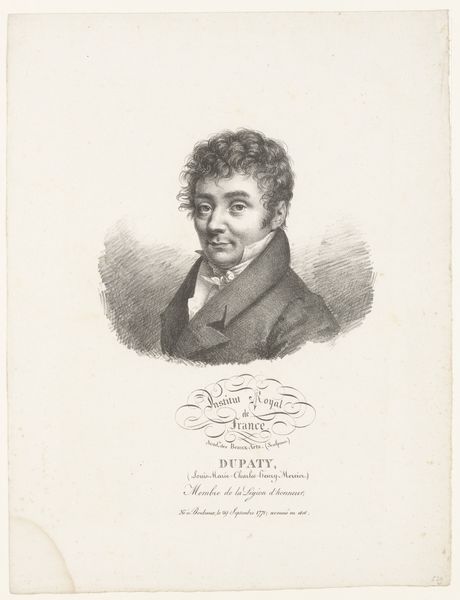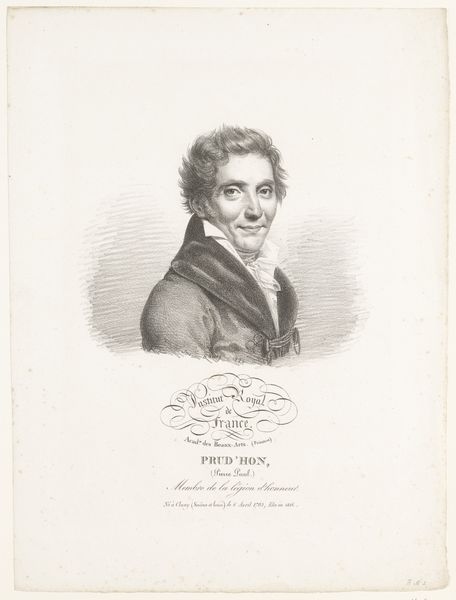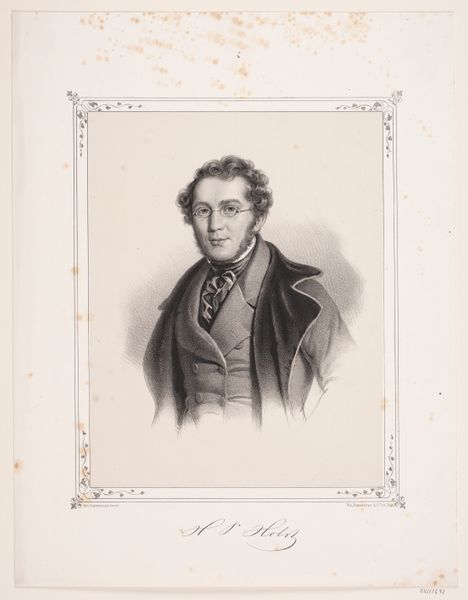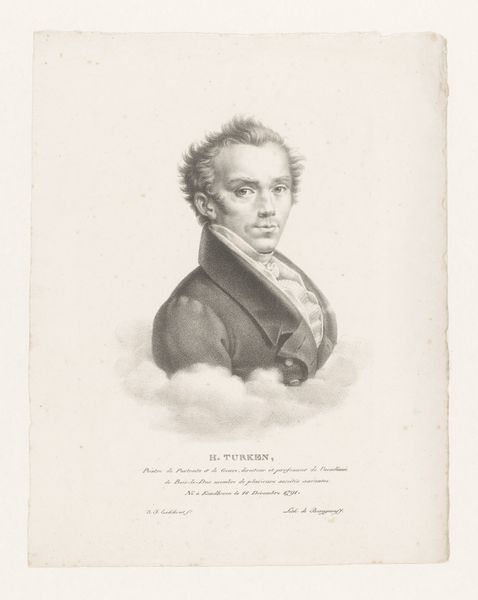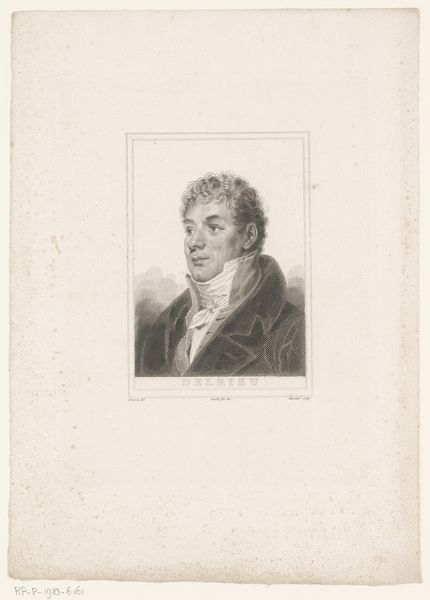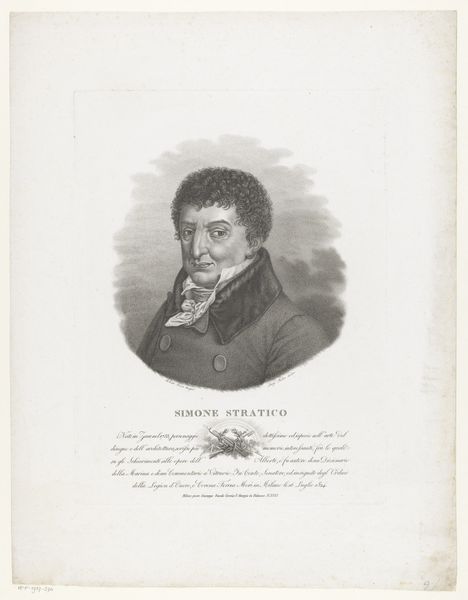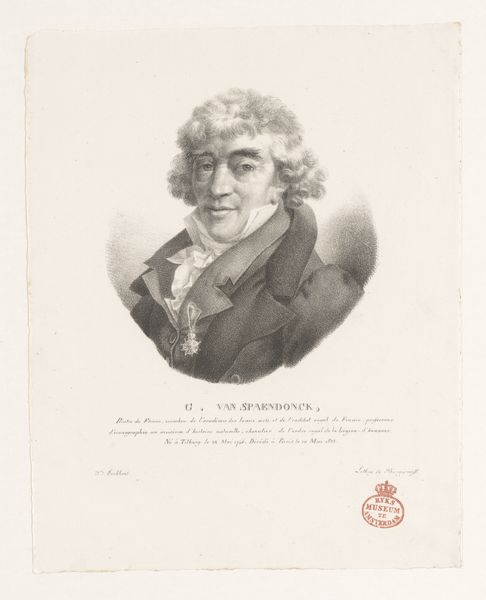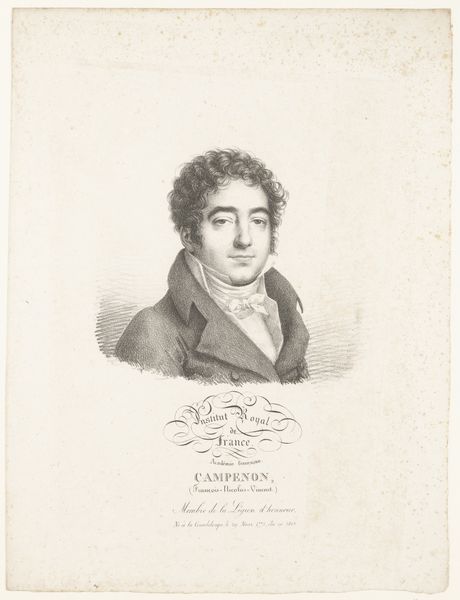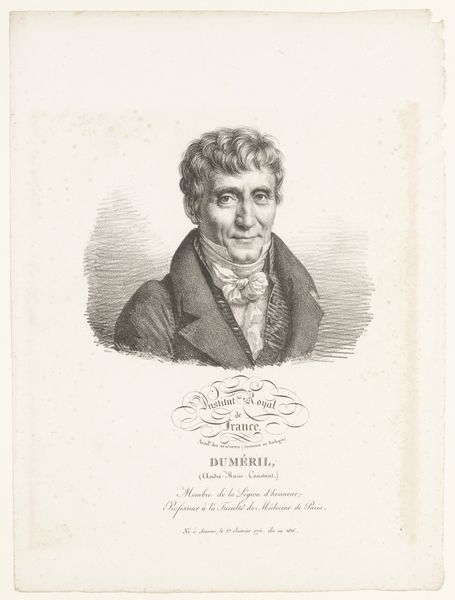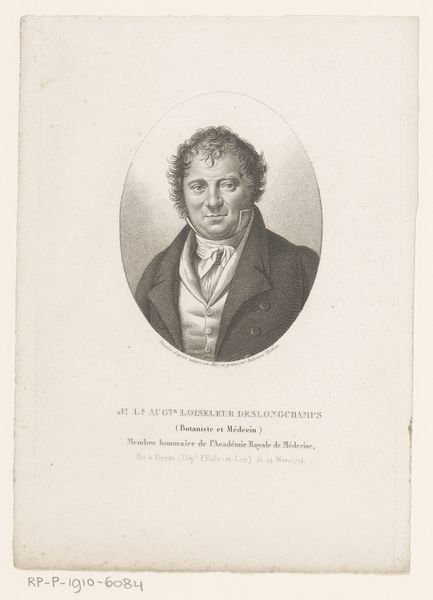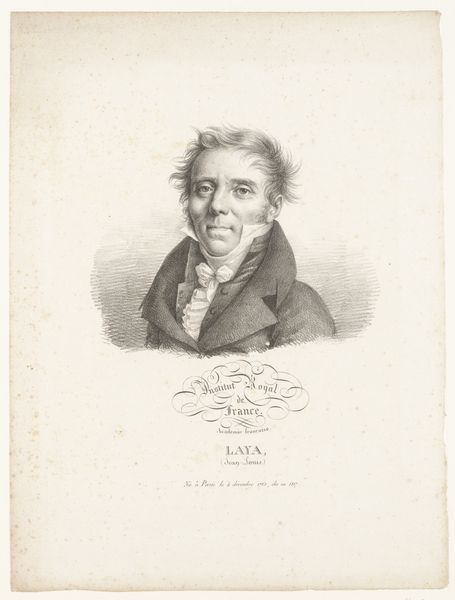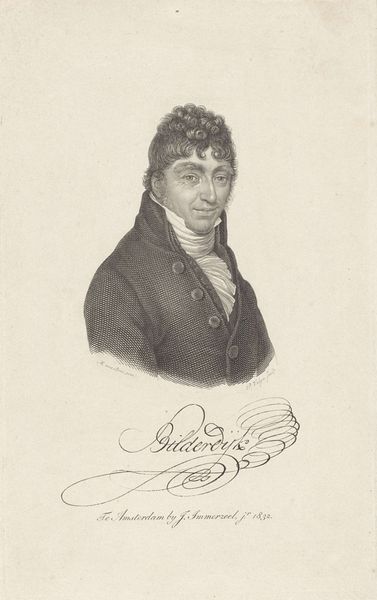
drawing, print, engraving
#
portrait
#
drawing
#
neoclacissism
# print
#
history-painting
#
engraving
Dimensions: Sheet: 14 x 10 11/16 in. (35.5 x 27.2 cm) Image: 6 5/16 × 7 5/8 in. (16 × 19.3 cm)
Copyright: Public Domain
Jules Boilly created this portrait of Jean-Baptiste Biot in the 19th century, likely using a technique called lithography. This printing process involves drawing on a flat stone with a greasy crayon, then applying ink which adheres only to the drawn areas. Lithography democratized image-making. Compared to earlier methods like etching or engraving, it was much faster and cheaper. The resulting prints, like this portrait, could be produced in large numbers and distributed widely, offering a means of visual communication aligned with the era of mass production. Consider the labor involved: from quarrying the lithographic stone to the skilled hand of the artist creating the image, and the printer running off the copies. All of this contributes to our understanding of the print not just as an image of a man, but as an object embedded in the social and economic fabric of its time. By focusing on the materials and processes, we get a richer sense of its cultural significance, bridging the gap between fine art and the world of production.
Comments
No comments
Be the first to comment and join the conversation on the ultimate creative platform.
